eISSN: 2576-4500


Research Article Volume 7 Issue 1
1Department of Aerospace Engineering, Izmir Economic University, Turkey
2Space Technology Research Laboratory, Department of Mechanical and Aerospace Engineering, Nazarbayev University, Kazakhstan
Correspondence: Abbasali Saboktakin, Department of Aerospace Engineering, Izmir Economic University, Turkey
Received: January 02, 2023 | Published: January 17, 2023
Citation: Saboktakin A, Spitas C. Hypervelocity launchers for satellite structures orbital debris characterization. Aeron Aero Open Access J. 2023;7(1):1-5. DOI: 10.15406/aaoaj.2023.07.00163
Orbital debris poses increasing threats to the space environment because of increasing space activities, therefore on-orbit hypervelocity impact should be simulated using the experiment by launch projectile into the target. Generally, ground-based experiments include three major sectors: projectile launch, impact monitoring including shock wave and debris cloud formation imaging, and finally result processing. For ground-based hypervelocity impact tests, various acceleration techniques such as light two and three-stage gas guns, plasma accelerators, electrostatic accelerators, and shaped charge accelerators have been used. This paper will primarily focus on those that are most relevant to current research on hypervelocity tests and would improve current research in the field of hypervelocity impact tests on composite material for primary satellite structures.
Keywords: hypervelocity, satellite structure, launcher, composite, material characterization
High-quality composite materials have been used for decades in space applications, and mostly can be found in human spacecraft, satellite structures and space launch vehicles. They are used for a wide range of applications in launch vehicles such as solid rocket engines and fuel and gas pressure vessels. Many composite materials used as a thermal protection system for vehicles to re-enter the atmosphere. Carbon fiber composites are commonly used on satellites structures and their payload systems.1 The bus structure of the satellite is made of aluminium honeycomb cores with composite skins. Other structures that require dimensional stability are constructed from reinforced composite materials. Figure 1 depicts example application of composite materials for advanced space structures and how to determine their performance when those are subjected to hypervelocity debris. These composites materials aid in the preservation of extreme dimensional stability at extreme temperatures in space.2 The demand for larger composite structures has prompted the development of high-quality composite structures that can fabricate these components with fewer joints, thereby increasing the benefits of using composite structures.3
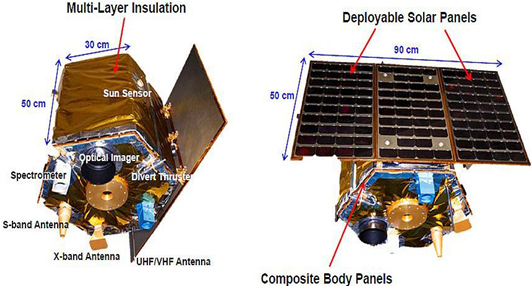
Figure 1a Satellite shield of composite materials, Laser optical unit of satellite is made of composite.
Experimental ground-based hypervelocity impact research is a significant tool for determining the properties of composite materials subjected to hypervelocity debris. A variety of experimental hypervelocity test facilities can simulate orbital debris collision conditions. The capabilities of these facilities in terms of projectile size and impact velocity are depicted in Figure 2.1
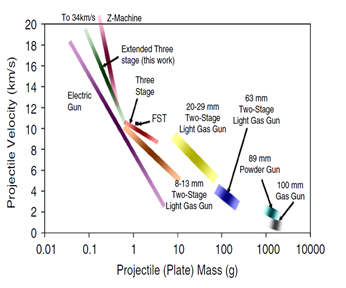
Figure 2 Comparison of accelerator technologies.2
As seen in the Figure 2 and also based on the other literature on hypervelocity impact:3–6
The powder guns cover 1200 g at 1.0 km/s to 160 g at 3.8 km/s,
The single-stage light gas guns cover 1200 g at 0.8 km/s to 160 g at 2.0 km/s
Two-stage light gas guns 80 g at 3.0 km/s −→ 0.2 g at 9.5 km/s
Modified light gas guns 5 g at 10.0 km/s −→ 0.1 g at 15.0 km/s
Electromagnetic rail guns 20 g at 1.5 km/s −→ 1.0 g at 7.5 km/s
Electrostatic guns 6 g at 2.0 km/s −→ 0.05 g at 18.0 km/s
Shaped charges 10 g at 10.0 km/s −→ 1.0 g at 11.5 km/s
The two-stage and three stage light gas guns are the usual laboratory instrument for research of debris impact at high velocity. Although some facilities have been able to accelerate smaller particles to 10 km/s or more, conventional light gas cannons normally can accelerate hitting objects with a diameter of less than 1.5 mm to more than 50 mm to about 8 km/s. A sphere is the typical projectile fired from a two-stage and three stages light gas, while alternative shapes such as thin plates, cylinders, and long rods can also be employed.
Electrostatic accelerators
In this type of accelerator, a high voltage potential acts on electrostatically charged micro-particles. The operation of an electrostatic accelerator is depicted in Figure 3. By varying the voltage, a system can select the mass and electronic velocity of the desired particles and deflect them to the target. A speed of 60-80 km/s is possible depending on particle mass. The mass ranges from 10E-16 to 10E-8 g. Micro particle impact phenomena and space debris on spacecraft and satellite structures are commonly simulated using such accelerators.7,8
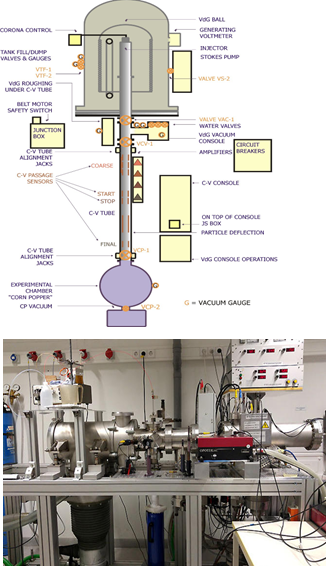
Figure 3 ThreeSchematic view of the electrostatic accelerator with velocities range of 1 to 80 km/h and its experimental facility.7
Plasma accelerator
This mechanism accelerates particles weighing 10e-6 to 10e-9 g at a maximum speed of 20-25 km/s using plasma drag forces. Figure 4 depicts an accelerator with a plasma coil. When a capacitor bank is discharged, plasma is formed between the concentric electrodes.8 A strong current generates a magnetic field around the central electrode, accelerating the plasma to the coil, where it is compressed and collides with glass projectiles, which are then, drag accelerated by dense and fast plasma. Due to the intense radiation of hot plasma, the projectile material is limited to transparent materials. It covers a wide range of mass and velocity, therefore, this type of accelerator is widely used to simulate micrometeoroids and orbital debris.
Shaped charge acceleration
Another method for generating projectile speeds greater than 10 km/s relies on specific shape loading techniques, as illustrated in Figure 5. A conical bar with a cylindrical tip is attached to an inhibitor. After ignition, a cylindrical projectile is formed as the developing jet's tip particle. The properties and arrangement of the inhibitor are adjusted to prevent further jet development by the charge blocked behind the projectile.11 Projectile speeds of about 12-14 km/s for projectile masses of several grams can be obtained using such method.

Figure 5 Schematic images of inhibitor position in a shaped charge accelerator.12
Exploding foil/wire acceleration
Several acceleration techniques use the energy generated by electrically exploded foil or wire. Figure 6 depicts a configuration in which an electric foil explodes due to a high voltage applied between two electrodes.13,14 During the explosion, a circular piece of foil is punched out in the direction of the cylindrical hole inside a steel plate that serves as a launch tube. As a result, a planar foil projectile weighing about 50 mg can reach speeds of up to 7 km/s.

Figure 6 Schematic of experimental arrangement of exploding foil system.14
Electro-magnetic rail gun
Figure 7 depicts the operation of electric rail guns. Between two rails, an electrically conductive projectile is installed. A controlled capacitor generates discharge currents in the rails and projectile. A magnetic field forms around the rails, and electromagnetic forces move the projectile.15 In theory, this method can produce very high speeds, but due to technical constraints, the speeds obtained for large projectile masses have been limited to a few kilometers per second. Electromagnetic launchers are divided into two types: electromagnetic rail guns and electromagnetic coil guns.

Figure 7b Example of electric capacitors for lunching.16
The rail gun is made up of two parallel metal rails and a frame that moves along these rails. They are suitable for launching large projectiles. When a voltage is applied to the rails, the armature completes the current cycle and current flows through the armature. A magnetic field created by the current flowing in the rails generates a force that is applied to the armature. The armature moves as a result of this force and the projectile connected to the armature are launched. A coil gun structure and operation principles are more complex than those of rail guns. This includes a cylindrical frame, one or more coils within the cylinder, and an ejected projectile. Because there is no friction between the projectile and the muzzle in coil guns, the acceleration is not harmed. Although, the rail gun speed is faster than the coil gun speed, the required excitation current, on the other hand, is much higher. Rail guns are also prone to melting and erosion. The coil gun is more efficient than the rail gun due to the robust magnetic connection between the coils and the projectile.
Light gas guns
The two-stage light gas guns as highly versatile tools for hypervelocity testing are described here. The energy from the propellant combustion is transferred to a light gas such as helium/hydrogen in the pump pipe via the pressure piston, as shown in Figure 8. High pressures are applied to the light gas until it reaches the pressure of diaphragm rapture.15 Hot compressed gas can now be expanded into the launch tube, accelerating the projectile, which is protected from hot gas and acceleration forces by plastic covers.
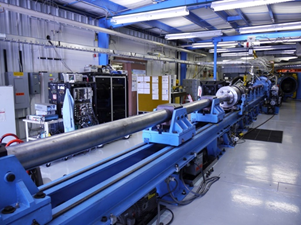
Figure 8b Experimental view of hypervelocity in Sandia Lab, US.17
Figure 8 Three-point continuum of nutrition economics.
The sabot is separated after leaving the projectile, and the projectile hits the target. X-ray detection equipment and high-speed camera techniques can be used to record the stages of a projectile. Many research findings have been published to describe the fascinating expansion of a two-stage light gas gun capable of reaching speeds of over 7-8 km/s. Figure 9 depicts a three-stage lightweight gas gun which is a modification of two-stage gas gun.
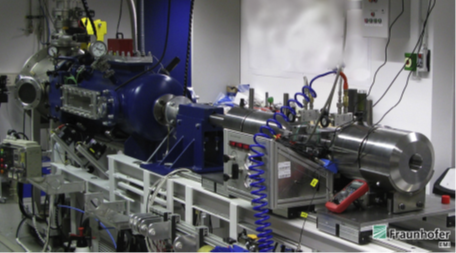
Figure 9b Photograph of the modified gas Germany EMI, Germany.17
Even though there are different accelerators in the form of a charge, magnetic field pulse, or impact acceleration that drives small and thin targets discs at speeds of over 11 kilometers per second, these methods are primarily used in energy experiments, materials studies, and planet formation. At this speed, the projectile deforms or melts before colliding with the target, or both the projectile and the target are evaporated in the collision, making it impossible to assess the damage to the target, such as composite and investigate the performance of spacecraft structures subjected to hypervelocity impact. In orbital speed tests, the projectile must have the same shape and weight as when it impacted the spacecraft, and the composite must not be destroyed if it is damaged. This enables researchers to conduct highly controlled experiments to determine exactly what happens to a Whipple shield or composite structure when it collides with debris at a specific speed and providing real information about measurable damage. So far, the best option for hypervelocity impact is to use light gas guns.
There are facilities in several countries capable of performing impact tests at speeds exceeding 7 km/s, but information and access to such facilities are difficult. Impact research and the construction of new hypervelocity facilities do not have a coordinated strategy, and the findings of experiments are not widely disseminated. The development of accurate models of debris impact damage has been slowed by the overall lack of accessibility to facility capabilities and the impact data gathered at these sites.
Toward conducting our research we have to be the aware following point is the performance limitations of two-stage light gas guns: Physical constraints on projectile velocity and flow dissipation energy. This is a practical technical limitation in the gas gun to reach higher impact velocity. Other technical limitations also include the stresses created and the thermal resistance in the conical part at the pump tube end. Therefore, to manufacture a modified two-stage light-gas gun, we need to concentrate on the following major parts: a powder chamber, a pump tube, a piston, and a suitable driver gas in the pump tube, a tapered section reservoir, a launch tube, a projectile in the launch tube, and a target chamber. NASA, Dayton Research Institute, and Sandia National Laboratories have been developed such a three-stage gas gun, but no information about a modified two-stage gas gun has been released. There is still a long way to go before launching a heavier gram at speeds exceeding 10 kilometers per second.
None.
The authors declare that there are no conflicts of interest.
The authors declare they have no financial interests.

©2023 Saboktakin, et al. This is an open access article distributed under the terms of the, which permits unrestricted use, distribution, and build upon your work non-commercially.